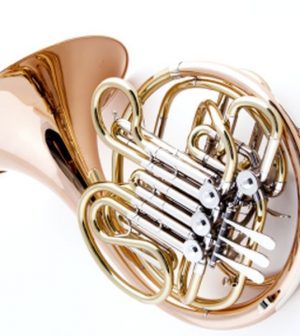- Navigating Your Midlife Crisis: Embracing New Possibilities
- City Raccoons Showing Signs of Domestication
- Mapping the Exposome: Science Broadens Focus to Environmental Disease Triggers
- One Week Less on Social Media Linked to Better Mental Health
- Your Brain Changes in Stages as You Age, Study Finds
- Some Suicide Victims Show No Typical Warning Signs, Study Finds
- ByHeart Formula Faces Lawsuits After Babies Sickened With Botulism
- Switch to Vegan Diet Could Cut Your Greenhouse Gas Emissions in Half
- Regular Bedtime Does Wonders for Blood Pressure
- Dining Alone Could Mean Worse Nutrition for Seniors
Blow Your Horn: Do Wind Instruments Spread COVID?

Strike up the band!
A new study finds that the aerosols produced by wind instruments like trombones and flutes are no more concerning than those given off during normal speech and breathing.
For the study, University of Pennsylvania researchers worked with the Philadelphia Orchestra to better understand how much aerosol was produced and dispersed by wind instruments.
After canceling public presentations early in the pandemic, many groups began performing remotely or with limited crowds, the study noted.
“Ideally, musicians would sit near one another to compose the best sound, but such an arrangement became an issue during the COVID pandemic,” said study author Paulo Arratia, a professor of engineering at the University of Pennsylvania in Philadelphia.
Arratia and his team first used visualization to characterize the flow, tracking fog particles in the air with a laser. They measured aerosol concentration from wind instruments with a particle counter.
Combining these two measurements, the researchers developed a simple equation to describe aerosol dispersion, in which the aerosol speed declines as distance from the instrument grows.
The aim was to help other researchers determine how far aerosols will travel. The researchers were astonished at what the tests revealed.
“We were surprised that the amount of aerosol produced is of the same range as normal speech,” Arratia said. “I was expecting much higher flow speeds and aerosol concentrations.”
The investigators also found that speeds were much slower than when someone coughs or sneezes. For most instruments, the maximum spread was less than 2 yards, the findings showed.
That means that musicians who play wind instruments should stay six feet apart.
The researchers now plan to study how much aerosol and flow is produced when the whole orchestra is playing.
“Hopefully, this manuscript will guide health officials to develop protocols for safe, live musical events,” Arratia said.
The findings were published Aug. 16 in Physics of Fluids.
More information
The provincial government of Manitoba, Canada, has guidelines for musicians during COVID-19.
SOURCE: American Institute of Physics, new release, Aug. 16, 2022
Source: HealthDay
Copyright © 2025 HealthDay. All rights reserved.










